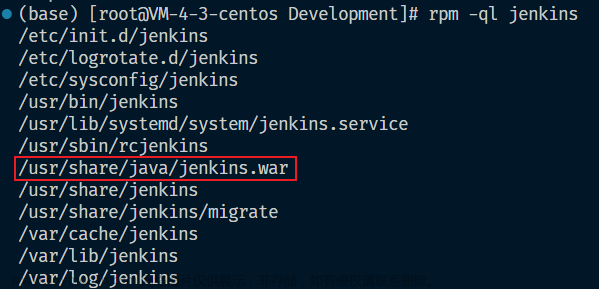四台服务器:
ansible: 管理端
node01 node02 node03: 被管理节点
1) 安装
[root@ansible ~]# yum install ansible -y
2) 查看帮助
[root@ansible ~]# ansible-doc -l | wc -l # 查看模块数量
[root@ansible ~]# ansible-doc -s yum # 查看yum模块的参数
[root@ansible ~]# ansible-doc yum # 查看相关帮助信息 (搜索/EXAMPLES)
[root@ansible ~]# ansible node03 -m setup # 获取对端节点的内置相关变量(主机名 ip地址等)
3) 如何查看某个模块的详细帮助信息
查看源代码: /usr/lib/python2.7/site-packages/ansible/modules/packaging/os/yum.py
ansible-doc yum # 查看相关帮助信息 (搜索/EXAMPLES)
常用四大模块:
yum copy file service
几个重要概念:
安装present
卸载absent
升级latest
排除exclude
指定仓库enablerepo
语法格式:
ansible 主机名或组名 -m 指定模块 -a 具体命令
yum模块:
#示例1: 安装当前最新的apache软件, 如果存在则更新
[root@ansible ~]# ansible group1 -m yum -a "name=httpd state=latest"
#示例2: 安装当前最新的apache软件, 通过本地仓库安装
[root@ansible ~]# ansible group1 -m yum -a "name=httpd state=latest enablerepo=c7-local-http"
#示例3: 删除apache软件
[root@ansible ~]# ansible group1 -m yum -a "name=httpd state=absent"
copy模块:
#示例1: 将本地的httpd.conf文件Listen端口修改为8080, 然后推送到远端服务器
[root@ansible ~]# ansible group1 -m copy -a "src=/etc/ansible/source_code/copy_module/httpd.conf dest=/etc/httpd/conf/httpd.conf owner=root group=root mode=644"
#示例2: 将本地的httpd.conf文件Listen端口修改为8088, 然后推送到远端, 检查远端是否存在上一次的备份文件
[root@ansible ~]# ansible group1 -m copy -a "src=/etc/ansible/source_code/copy_module/httpd.conf dest=/etc/httpd/conf/httpd.conf owner=root group=root mode=644 backup=yes"
# 查看是否有对应的备份文件
[root@ansible ~]# ssh node01 ls /etc/httpd/conf/httpd\*
#示例3: 往远程的主机文件中写入内容
[root@ansible ~]# ansible group1 -m copy -a "content='Hello World......\n' dest=/var/www/html/index.html"
# 校验对端服务器对应的文件内容是否已经修改
[root@ansible ~]# ssh node01 cat /var/www/html/index.html
file模块:
#示例1: 创建文件/var/www/html/hostname.html, 并设定属主 属组 权限
[root@ansible ~]# ansible group1 -m file -a "path=/var/www/html/hostname.html state=touch owner=apache group=apache mode=644"
# 查看文件否创建成功
[root@ansible copy_module]# ssh node01 ls -lt /var/www/html/hostname.html
#示例2: 创建目录/var/www/html/imgs, 并设定属主 属组 权限
[root@ansible ~]# ansible group1 -m file -a "path=/var/www/html/imgs state=directory owner=apache group=apache mode=755"
[root@ansible ~]# ssh node01 ls -ld /var/www/html/imgs
#示例3: 递归授权目录的方式
[root@ansible ~]# ansible group1 -m file -a "path=/var/www/html/ owner=apache group=apache mode=755"
[root@ansible ~]# ansible group1 -m file -a "path=/var/www/html/ owner=apache group=apache recurse=yes" # 递归授权
service模块:
[root@ansible ~]# ansible group1 -m service -a "name=httpd state=stopped" # 先停止服务
查看服务状态:
[root@ansible ~]# ssh node01 systemctl status httpd | grep 'Active: '
Active: inactive (dead) since # stopped状态
#示例1: 启动Httpd服务
[root@ansible ~]# ansible group1 -m service -a "name=httpd state=started"
查看服务状态:
[root@ansible ~]# ssh node01 systemctl status httpd | grep 'Active: '
Active: active (running) since Mon # running状态
#示例2: 重载Httpd服务
[root@ansible ~]# ansible group1 -m service -a "name=httpd state=reloaded"
#示例3: 重启Httpd服务
[root@ansible ~]# ansible group1 -m service -a "name=httpd state=restarted"
#示例4: 停止Httpd服务
[root@ansible ~]# ansible group1 -m service -a "name=httpd state=stopped"
#示例5: 启动Httpd服务, 并加入开机自启
[root@ansible ~]# ansible group1 -m service -a "name=httpd state=started enabled=yes"文章来源:https://www.toymoban.com/news/detail-401884.html
文章来源地址https://www.toymoban.com/news/detail-401884.html
到了这里,关于ansible 云计算 自动化的文章就介绍完了。如果您还想了解更多内容,请在右上角搜索TOY模板网以前的文章或继续浏览下面的相关文章,希望大家以后多多支持TOY模板网!








